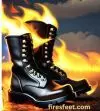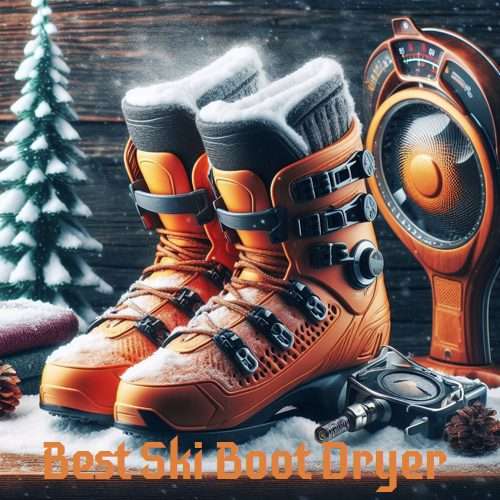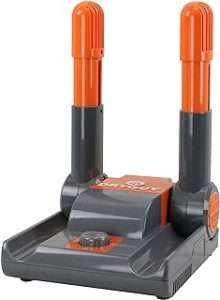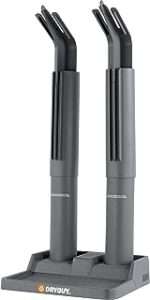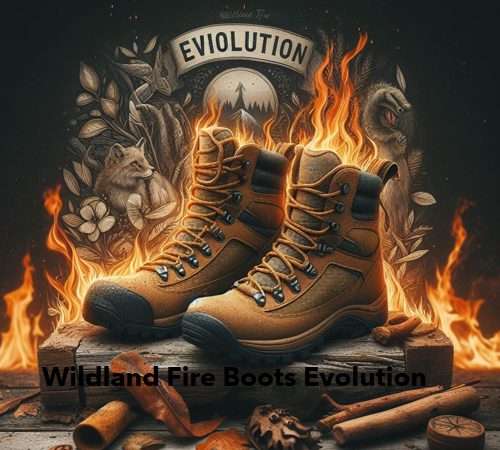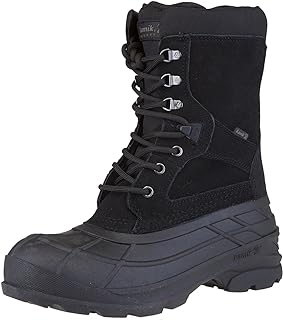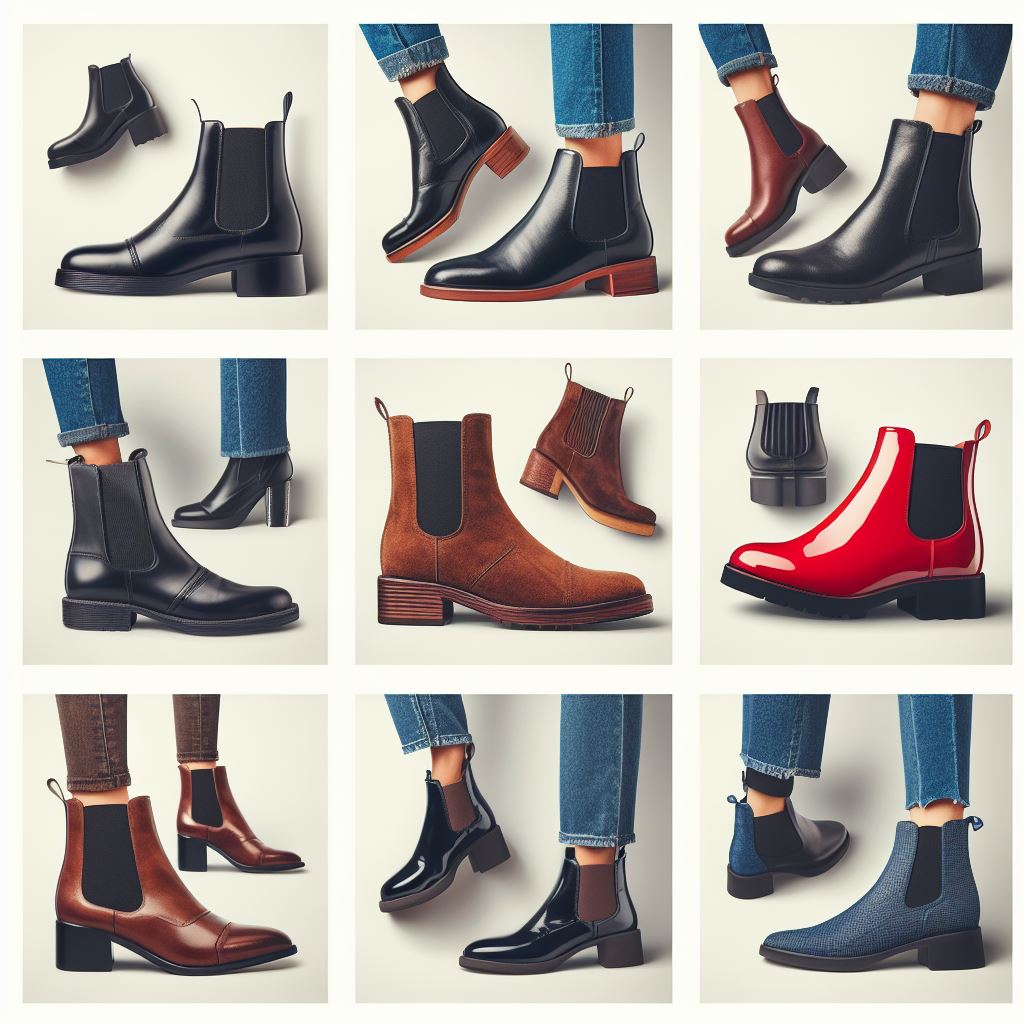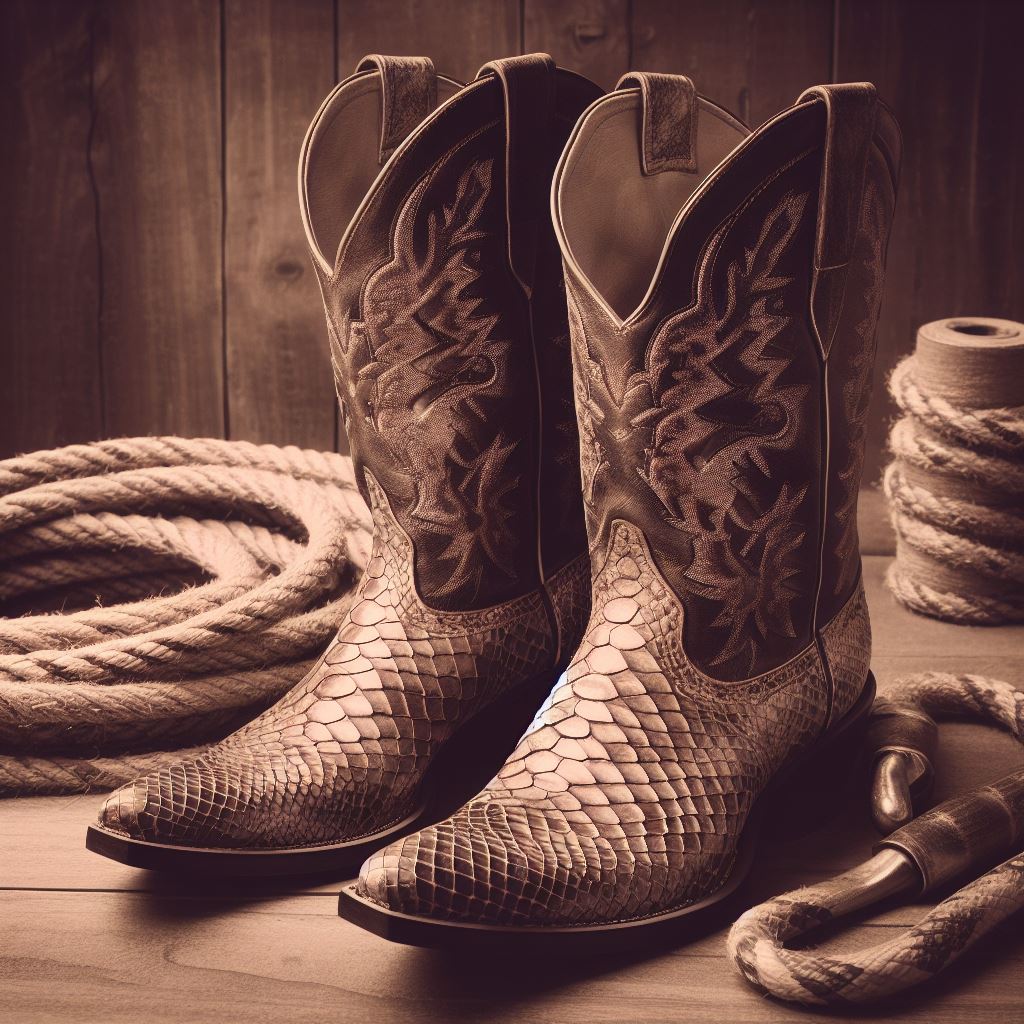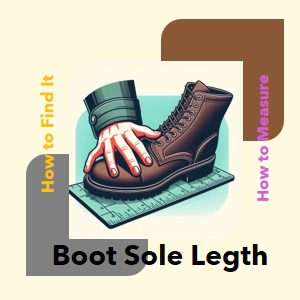Skiing is an exciting and thrilling sport, but it also has some challenges. How to keep your ski boots dry and fresh after a long day on the slopes is one of them. Wet boots can cause blisters, smells, and material damage. That is why you need a ski boot dryer, which circulates warm air through your boots while removing moisture and bacteria. But how can you pick the best ski boot dryer for your requirements? There are numerous aspects to consider, including the dryer’s size, capacity, power, speed, noise, mobility, and pricing. In this article, we will assist you in comparing several models and features to discover the ideal one for you. We will also answer some common questions about ski boot dryers, such as:
Table of Contents
Toggle- What is the best ski boot dryer for 2024?
- What is the best way to dry ski boots?
- Do boot dryers keep boots from smelling?
- Do boot dryers damage leather?
What is a Ski Boot Dryer?
A ski boot dryer is a gadget that dries your ski boots and other footwear by using heated air. It is also capable of drying gloves, helmets, caps, and other accessories. Mold, mildew, and bacteria can form in your ski boots, causing unpleasant odors and diseases. A ski boot dryer can help prevent this. A ski boot drier can also help your boots survive longer by reducing cracks and tears in the leather and plastic. There are various types of ski boot dryers, including:
Forced-air dryers: They employ a fan to circulate heated air via tubes or nozzles attached to your boots. They are quick and efficient, but they can also be loud and bulky.
Convection dryers: These dryers use natural air circulation to dry your boots. They are quiet and compact, but they can take longer to dry your boots and may not reach all the areas inside.
UV dryers: These dryers use ultraviolet light to kill bacteria and germs in your boots. They are hygienic and eco-friendly, but they may not dry your boots completely and may damage some materials.
How to Choose the Best Ski Boot Dryer for Your Needs
When selecting a ski boot dryer, keep the following elements in mind:
Dimensions and capacity:
How many pairs of boots do you need to dry at once? How much storage room do you have for the dryer? Some dryers can dry up to four pairs of boots at once, whilst others can only dry one. Some dryers may also fold or detach, making them easier to transport and store.
Speed and power:
How quickly do you want your boots to dry? How much electricity do you have at your disposal? Some dryers can dry your boots in an hour or less, while others can take up to eight hours. Some dryers can also run on batteries or car adapters, which is convenient for traveling or camping.
Noise and safety:
How loud is the dryer? How hot does it get? Some dryers can be very noisy, which can be annoying or disturbing. Some dryers can also get very hot, which can pose a fire hazard or damage your boots. You should look for dryers that have safety features such as timers, thermostats, and auto shut-off.
Portability and versatility:
How often do you travel with your ski boots? How many types of footwear do you need to dry? Some dryers are more portable and versatile than others. For example, some dryers can be used for shoes, sandals, slippers, and other types of footwear, while others are designed specifically for ski boots. Some dryers can also be used for gloves, helmets, hats, and other accessories, while others can only dry boots.
The Best Ski Boot Dryers for 2024
Here are some of the finest ski boot dryers for 2024, based on our research and reviews:
DryGuy Boot Dryer Travel Dry DX:
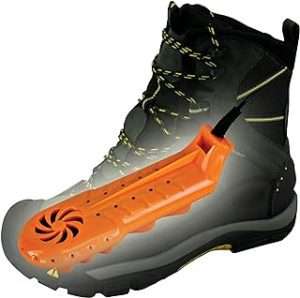 The DryGuy Boot Dryer Travel Dry DX is a small and portable forced-air dryer that can dry one pair of boots in two to five hours. It comes with a 12-volt auto converter and a 110-volt AC outlet, making it excellent for travel. Also, it features a heat and no-heat button, so you can select the drying mode. It is also capable of drying shoes, gloves, and other accessories.
The DryGuy Boot Dryer Travel Dry DX is a small and portable forced-air dryer that can dry one pair of boots in two to five hours. It comes with a 12-volt auto converter and a 110-volt AC outlet, making it excellent for travel. Also, it features a heat and no-heat button, so you can select the drying mode. It is also capable of drying shoes, gloves, and other accessories.
DryGuy Travel Dry Boot & Shoe Dryer:
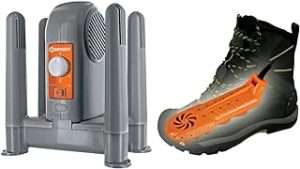 The DryGuy Travel Dry Boot & Shoe Dryer is another small and portable forced-air dryer that can dry a pair of boots in three to six hours. It has a 12-volt car adapter and a 110-volt AC outlet, which makes it ideal for traveling. Also, has a heat and no-heat switch, which allows you to choose the drying mode. It can also dry shoes, gloves, and other accessories.
The DryGuy Travel Dry Boot & Shoe Dryer is another small and portable forced-air dryer that can dry a pair of boots in three to six hours. It has a 12-volt car adapter and a 110-volt AC outlet, which makes it ideal for traveling. Also, has a heat and no-heat switch, which allows you to choose the drying mode. It can also dry shoes, gloves, and other accessories.
DryGuy Boot Dryer Force Dry DX:
This is a powerful and fast forced-air dryer that can dry up to four pairs of boots in one to two hours. It has a 110-volt AC outlet, which makes it suitable for home use. Also has a timer and a heat and no-heat switch, which allows you to customize the drying time and mode. It can also dry shoes, gloves, helmets, and other accessories.
DryGuy Force Dry Shoe, Glove, and Boot Dryer:
This is a versatile and effective forced-air dryer that can dry up to two pairs of boots and gloves in one to two hours. It features a 110-volt AC outlet, making it suitable for usage at home. Also contains a timer and a heat/no-heat button, allowing you to adjust the drying time and mode. It is also capable of drying shoes, helmets, hats, and other accessories.
DryGuy Boot Glove Dryer:
This is an easy-to-use convection dryer that can dry one pair of boots and one pair of gloves in six to eight hours. It features a 110-volt AC outlet, making it suitable for usage at home. Also has a heat and no-heat switch, which allows you to choose the drying mode. It can also dry shoes and other accessories.
Ignik Foot Warmers:
These are not dryers, but rather warmers that can keep your feet warm and cozy in your boots. They are battery-powered and can last up to six hours. Also, they have three heat settings and a remote control, which allows you to adjust the temperature. They can also fit in most types of boots and shoes.
Different Types of Ski Boot Dryers:
There are various types of ski boot dryers, including:
Wall-Mounted Ski Boot Dryers:
If you’re short on room, a ski boot dryer wall mount could be the right option. These units are small and easy to install, and they dry your boots quickly without taking up valuable floor space. Wall-mounted solutions are available from brands such as DryGuy and Ignik for individuals with limited storage space.
Portable Ski Boot Dryers:
A portable ski boot dryer is a game changer for individuals who are constantly on the road. These small devices are ideal for traveling, keeping your boots dry and ready to go wherever your skiing excursions take you. The DryGuy Travel Dry DX is an excellent solution for individuals who want portability without sacrificing performance.
Commercial Ski Boot Dryers:
Ski resorts and rental shops often require heavy-duty equipment. Enter the realm of commercial ski boot dryers, designed to handle the drying needs of multiple pairs of boots efficiently. Brands like DryGuy offer robust options suitable for high-demand environments.
DIY Ski Boot Dryers:
Crafty skiers might opt for a DIY ski boot dryer. While unconventional, homemade solutions can be surprisingly effective. We’ll explore some creative and budget-friendly ideas for those who enjoy a hands-on approach.
What is the best way to dry ski boots?
A ski boot dryer is the finest way to dry ski boots. It will dry your ski boots faster, safer, and more successfully than air drying, blow drying, or using a heater. Also, it can help prevent mold, mildew, bacteria, and odors from forming in your ski boots, hence extending their lifespan.
Do boot dryers keep boots from smelling?
Yes, boot dryers help keep boots smelling fresh. Boot dryers can remove moisture and odors from your boots while also keeping bacteria and fungi at bay. Some boot dryers also have deodorizers, sanitizers, ionizers, or aromatherapists that can further eliminate or mask odors from your boots.
Do boot dryers damage leather?
No, boot dryers do not harm leather when used properly. Boot dryers with a low or moderate temperature, a soft fan, and a timer can safely and effectively dry leather boots. Boot dryers with a high temperature, a powerful fan, or no timer, on the other hand, might overheat, over dry, or shrink leather boots, causing cracking, warping, or fading. When drying leather boots, it is critical to follow the directions and suggestions of both the boot dryer maker and the boot manufacturer.
Ending Note
FAQ
Most frequent questions and answers
What is the best way to dry ski boots?
Using a dedicated ski boot drier is the best way to dry ski boots. These machines, whether wall-mounted, portable, or commercial, efficiently and swiftly remove moisture, ensuring your boots are dry and ready for your next expedition.
How do boot dryers prevent odor?
Boot dryers minimize odor by drying boots effectively, reducing bacterial growth that generates unpleasant odors. Regular use of a quality boot dryer, such as the DryGuy model, keeps your footwear fresh and odor-free.
Can boot dryers damage leather?
Boot dryers do not harm leather when used properly. DryGuy Boot Dryer models use mild drying procedures to preserve the integrity of the boot.
Are DIY ski boot dryers effective?
Yes, DIY ski boot dryers can be effective. While unconventional, creative homemade solutions can efficiently dry boots. However, it’s essential to ensure proper ventilation and follow safety guidelines for optimal results.
What are the benefits of a portable ski boot dryer?
Portable ski boot dryers, such as the DryGuy Travel Dry DX, provide convenience on the go. These small devices are ideal for vacationers, as they keep boots dry and comfy no matter where your skiing excursions take you.
How do commercial ski boot dryers differ from residential ones?
Commercial ski boot dryers are intended for use in high-traffic areas such as ski resorts or rental stores. They have the strength to handle the drying needs of numerous pairs of boots at the same time, making them perfect for industrial use.
Do ski boot dryers work for gloves and other gear?
Yes, many ski boot dryers, like the DryGuy Force Dry Shoe Glove model, are versatile enough to dry gloves and other gear. Their forced-air technology ensures efficient and thorough drying for various types of equipment.
How often should I use a ski boot dryer?
It’s a good idea to use a ski boot drier on a frequent basis, especially after each use. This practice keeps your boots dry and comfy by preventing moisture buildup, odor, and the potential for bacterial growth.
Can I use a ski boot dryer for snowboard boots?
Without a doubt. Ski boot dryers are ideal for drying a variety of footwear, including snowboard boots. For best drying efficiency, use a dryer that accommodates the size and form of your individual boots.
Is a ski boot dryer a must-have for all skiers?
Yes, a ski boot dryer is highly recommended for all skiers. It not only extends the lifespan of your boots by preventing damage from moisture but also enhances your overall skiing experience by keeping your boots dry, comfortable, and odor-free.
Visit Firesfeet Blog – Your One-Stop Shop for Boot Reviews and Guides!
Here, we empower firefighters with the right boots for their needs. Our collection includes a variety of styles and sizes, guaranteeing the perfect fit for anyone. We take pride in our product quality, ensuring that our boots stand the test of time. With Firesfeet, you can confidently shop for wildland firefighting boots. Visit us today and discover why we are the most trusted source for firefighters looking to take on any challenge wearing firefighting footwear!
Keep yourself safe out there!
#WildlandFirefighters #SafetyFirst #Firesfeet#
